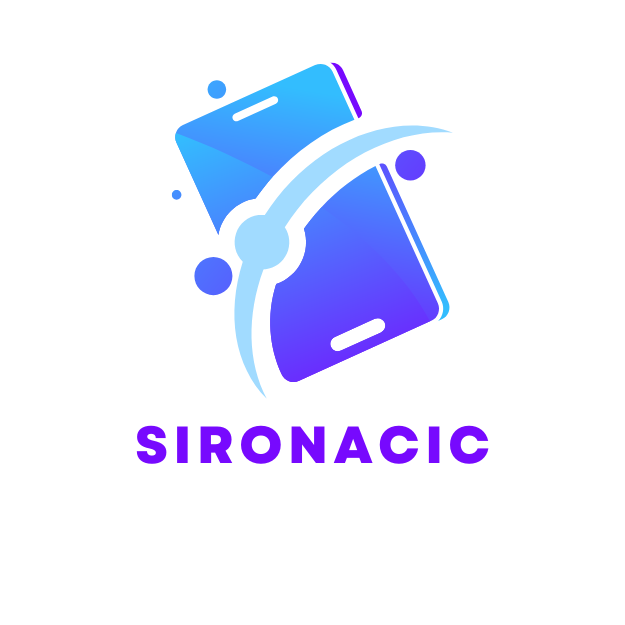In today’s digital landscape, video content has emerged as a powerful tool for brands looking to engage their audience. With the rise of platforms like YouTube, TikTok, and Instagram, businesses can no longer afford to overlook the impact of video. A well-crafted video content strategy not only boosts visibility but also enhances brand storytelling, making it essential for any marketing plan.
Creating an effective video content strategy involves understanding the target audience, defining clear objectives, and choosing the right formats. From promotional videos to educational content, the possibilities are endless. By leveraging video effectively, brands can foster deeper connections with their audience and drive meaningful engagement.
Table of Contents
ToggleUnderstanding Video Content Strategy
Video content strategy encompasses the planning and execution of video marketing efforts to achieve specific business goals. It plays a crucial role in audience engagement and brand visibility.
Definition and Importance
Video content strategy refers to the structured approach used to create, distribute, and manage video content. This strategy aligns video content with business objectives, ensuring it serves a clear purpose. Effective video content strategies lead to improved audience engagement, higher conversion rates, and enhanced brand loyalty. As per Wyzowl, 84% of people indicated being convinced to buy a product after watching a brand’s video. This statistic underscores the importance of a well-defined video content strategy in driving consumer decisions.
Key Components
- Target Audience: Identify and analyze the preferences, interests, and behaviors of the target audience to create relevant video content.
- Objectives: Set measurable goals for video content, such as increasing brand awareness, generating leads, or boosting sales.
- Content Types: Select appropriate video formats, including tutorials, testimonials, live streams, and promotional videos, based on audience preferences.
- Distribution Channels: Determine where to share video content, such as social media platforms, websites, or email campaigns, to maximize reach.
- Promotion and Engagement: Develop a plan for promoting videos through social media ads, SEO, and collaborations to enhance visibility and audience interaction.
- Analytics and Optimization: Use tools to track video performance metrics, analyze viewer engagement, and make data-informed adjustments to improve future content.
Planning Your Video Content Strategy

Effective video content strategy relies on a clear plan that encompasses specific goals, audience identification, and platform selection. Each component plays a crucial role in driving engagement and achieving desired outcomes.
Setting Goals and Objectives
Setting goals and objectives creates clarity and direction. He or she should establish specific, measurable, attainable, relevant, and time-bound (SMART) goals. For instance, increasing video views by 25% in six months aligns with business growth. Goals might include improving brand awareness, generating leads, or boosting sales. Clear objectives guide content creation, ensuring alignment with overarching business strategies.
Identifying Your Target Audience
Identifying the target audience enhances video effectiveness. He or she must analyze demographics, interests, and behaviors to tailor content. Utilizing analytics tools allows for gathering insight into audience preferences. For example, a brand targeting millennials may prioritize platforms like TikTok and Instagram for video distribution. Understanding the audience ensures content resonates, increasing the likelihood of engagement and conversion.
Choosing the Right Platforms
Choosing the right platforms maximizes video reach and engagement. He or she should evaluate which platforms best align with the target audience and objectives. YouTube suits long-form educational content, while TikTok and Instagram excel with short, engaging clips. Facebook Live or webinars could serve well for in-depth discussions. Selecting platforms strategically enhances exposure, leading to better performance and audience connection.
Creating Engaging Video Content
Creating engaging video content requires a strategic approach that aligns with audience interests and business objectives. Key focus areas include identifying relevant video types and adhering to production best practices.
Types of Video Content
Identifying the right types of video content ensures alignment with audience preferences. Effective formats include:
- Explainer Videos: These clarify complex concepts or products, making them accessible to a broader audience.
- How-To Guides: Instructional videos provide viewers with practical skills or solutions, enhancing value and engagement.
- Testimonials: Customer success stories build trust, as authentic experiences resonate with potential buyers.
- Behind-the-Scenes: Showcasing a brand’s culture or processes humanizes the business and fosters connection with viewers.
- Webinars: Live or recorded events present in-depth information while enabling real-time interaction with the audience.
- Promotional Videos: Short, captivating clips effectively highlight products or services, driving conversions.
- User-Generated Content: Featuring content created by customers increases authenticity and encourages community participation.
Best Practices for Production
Adhering to production best practices enhances the quality and effectiveness of video content. Important practices include:
- Planning: Outline objectives, target audience, and key messages before production begins to ensure clarity and focus.
- High-Quality Equipment: Use professional cameras, microphones, and lighting to deliver visually appealing and acoustically clear videos.
- Scripting: Write concise, engaging scripts that maintain viewer interest while conveying essential information.
- Editing: Invest time in post-production to refine visuals, audio, and pacing, creating a polished final product.
- Branding: Integrate consistent branding, such as logos and color schemes, to reinforce brand identity throughout the video.
- Call to Action (CTA): Include a strong CTA at the end of each video, guiding viewers on the next steps to foster engagement and conversions.
- Accessibility: Add subtitles or captions to make videos accessible to all viewers, improving reach and inclusivity.
Leveraging these elements significantly enhances online presence and engagement metrics.
Measuring Success of Your Video Content Strategy
Measuring the success of a video content strategy is essential for understanding its effectiveness and impact. Businesses must track specific metrics to evaluate performance and make informed adjustments.
Key Performance Indicators (KPIs)
Identifying key performance indicators (KPIs) provides a framework for assessing video success. Common KPIs for video content include:
- View Count: Indicates overall reach and interest in the video.
- Engagement Rate: Measures likes, shares, and comments relative to views, reflecting audience interaction.
- Watch Time: Total time viewers spend watching the video, indicating content quality and relevancy.
- Click-Through Rate (CTR): Percentage of viewers who click on calls to action, showing effectiveness in prompting desired actions.
- Conversion Rate: Percentage of viewers completing a specific goal post-viewing, such as signing up for a newsletter or making a purchase.
- Audience Retention: Shows the percentage of viewers who watch the video until the end, offering insights into content effectiveness.
Tracking these KPIs allows businesses to determine strengths and weaknesses in their video content strategy.
Analyzing Metrics and Data
Analyzing metrics and data aids in refining video content strategy for improved results. Employing tools like Google Analytics or social media insights can provide valuable information on audience behavior and preferences. Consider the following when analyzing data:
- Segmenting Audiences: Analyze viewer demographics to tailor content to specific segments, enhancing relevance.
- Comparing Performance: Evaluate individual video performance against benchmarks and previous videos to identify trends.
- Tracking Trends Over Time: Monitor KPI trends to understand long-term performance, helping adjust strategy as necessary.
- A/B Testing: Experiment with different video formats, lengths, or messages to determine which resonates most with the audience.
- Utilizing Feedback: Collect audience feedback through surveys or comments to gain insights for future content development.
Consistent analysis of metrics drives continuous improvement in video strategies, ultimately leading to higher engagement and conversion rates.
Crafting a robust video content strategy is essential for brands aiming to connect with their audience effectively. By understanding the target demographic and setting clear objectives, businesses can create engaging video content that resonates.
Utilizing the right platforms and formats ensures maximum reach and engagement. Regularly measuring performance through key metrics allows for ongoing optimization and improvement.
With the right approach, video content can transform brand storytelling and foster lasting relationships with audiences, ultimately driving success in today’s competitive landscape.






